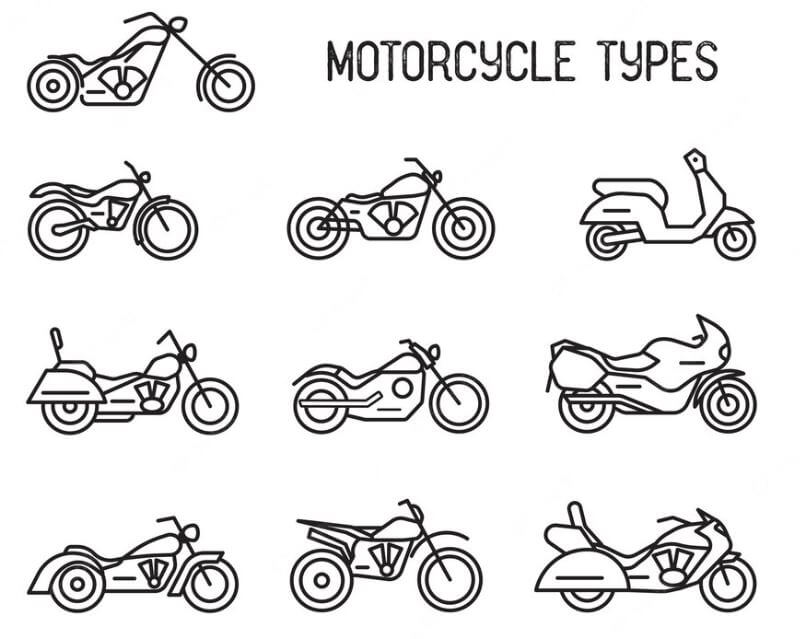The question of how long does a motorcycle last is not just an indicator of a bike’s performance but could be a deal-breaker for a potential purchase of a secondhand vehicle. Nevertheless, placing a definite number on mileage as a litmus test for the lifespan of a motorcycle is nearly impossible. Although sources have documented that a bike can still perform impressively at 100,000 miles, its peers may succumb for less on the odometer reading.

An explanation for this is simple. Not only does the make of a motorcycle differ from one brand to another, but the care received by each vehicle also varies from one owner to another. If you have a specific bike for a lengthy period or are considering the prospect of purchasing a used motorcycle, this article is for you.
Read on to have an idea of how many miles a motorcycle lasts and the factors that affect the lifespan of your bike.
Factors That Affect A Motorcycle Mileage:
How old is too old when it comes to motorcycle age?
How far is too far for the mileage of the bike?

While the answers to these questions are fluid, it is not an exaggeration to state that motorcycles can last a lifetime if maintained properly. This is contrary to popular beliefs that motorcycles would not last as long as cars, and some may even propose to discard their bikes after 12-15 years. However, as stated earlier, the mileage that a motorcycle can withstand in its lifespan varies from one circumstance to the next. In an ideal environment, however, a sturdy motorcycle can even outlive its owner if cared for properly.
The examples of factors that contribute to the durability of the bike are further elaborated on in this section. It is worth noting that while the initial motorcycle quality will inadvertently affect the overall mileage of a motorcycle, the care that the owners place on their vehicles is more paramount to its lifespan.
You May Also Like:
Why Turn Fuel Off On Motorcycle? 6 Reasons You Must Know!
Type of Motorcycles

Not all motorcycles are built equal. Modern motorcycles generally would last longer than their traditional counterparts for the sole reason of the advanced technology behind their construction. Better material and optimized physics contribute to the formation of improved durability of a vehicle.
Sport bikes for instance, when used for their purpose at full functionality, may not last as long as a touring bike. Again, this is because the former is exposed to harsher usage, which subjects the parts of the bike to accelerated wear and tears. On the same token, motorcycles with bigger engines with higher expandability would outlast smaller engines based on this alone.
Manufacturer of Motorcycles

This aspect comes with no question that expert brands of motorcycles would produce better quality bikes for consumers. Although not necessarily true, more expensive motorcycles are expected to have a longer lifespan because of the transferable cost of better-quality materials and technology to owners.
In this field, Japanese manufacturers such as Honda and Yamaha are unequaled in their technology and design strategies at producing favorable quality motorcycles on mass scales. In comparison, a Honda motorcycle recorded odometer readings as high as 400, 000 miles as opposed to Polaris and Harley at over 100, 000 miles. The global average mileage for Honda is approximated at 150, 000 miles.
Maintenance of Motorcycles
When it comes to gauging a motorcycle’s overall expected mileage, the number one factor to evaluate is the maintenance of the motorcycle. First and foremost, the important step of this process is to perform necessary oil changes to air filters regularly. Next, do not forgo the importance of lubrication, tire maintenance, and regular services on the bike.
Riders who wish to stretch the mileage of their rides are expected to perform regular servicing to the manufacturer’s instructions. A good practice when using only high-quality replacement parts for their motorcycle will also help to increase the lifespan of a motorcycle.
Weather Conditions
Environmental elements can directly impact the performance and longevity of your motorcycle. Temperatures at both extremes, for instance, riding a bike below freezing points or cruising on the road in torrid, sizzling summer weather can trigger wear and tear to the vehicle. External damages may range from deterioration of paint jobs, coating material, and seal integrity. Meanwhile, some internal defects that can appear secondary to extreme weather on a bike can include malfunctioning battery and circuitry.
Overall Usage
How a rider treats their motorcycle will also affect how long it lasts. Poor riding habits that include implementing unnecessary gear changes or adding excessive accessory weight on the bike can instantly reduce fuel efficiency and the subsequent motorcycle mileage. Not only that, riding techniques applied during constant, abrupt braking and heavy accelerating can negatively impact a motorcycle’s mileage and fuel efficiency.
In general, appropriate treatment of a motorcycle; from the way it is stored to how its engine is run will secure an extended lifespan of the bike. Respect and ride your motorcycle professionally and it will not let you down when it comes to its lifespan.
Final Thoughts How Many Miles Do Motorcycles Last
So, back to our initial question; how many miles do motorcycles last?
Based on the factors outlined in the earlier segment, it is safe to say, it depends on how it is treated. Wear and tears are inevitable to any vehicle; both cars and motorcycles. Theoretically speaking, you can have a motorcycle last a lifetime if you are invested in dutiful part replacement as soon as they are worn out.
Over time, however, older replacement parts become scarce. Keeping an old motorcycle at some point would turn into a matter of choice and passion given there is no financial constraint. After a decade of the last model of production, procuring replacement parts would result in downtime. Or, the bike enthusiast in you would fall in love with a new model.
Irrespective of the reason for parting with the old steed, motorcycles will last as long as you allow them to. Unfortunately, most bikes start to become unreliable even before reaching the 100,000 miles plateau. Still, if you wish, regularly servicing and delivering proper care of your motorcycle will indefinitely extend its lifespan although, in the long run, there will not be much of what is original on its make-up.
M/HW


